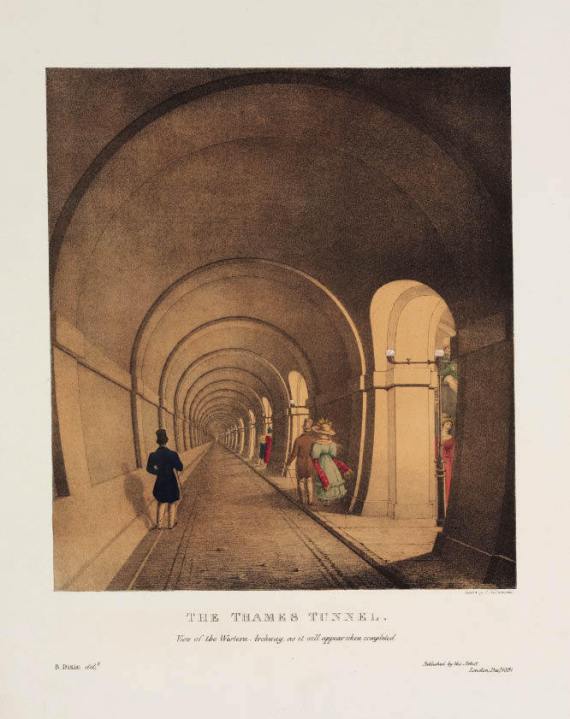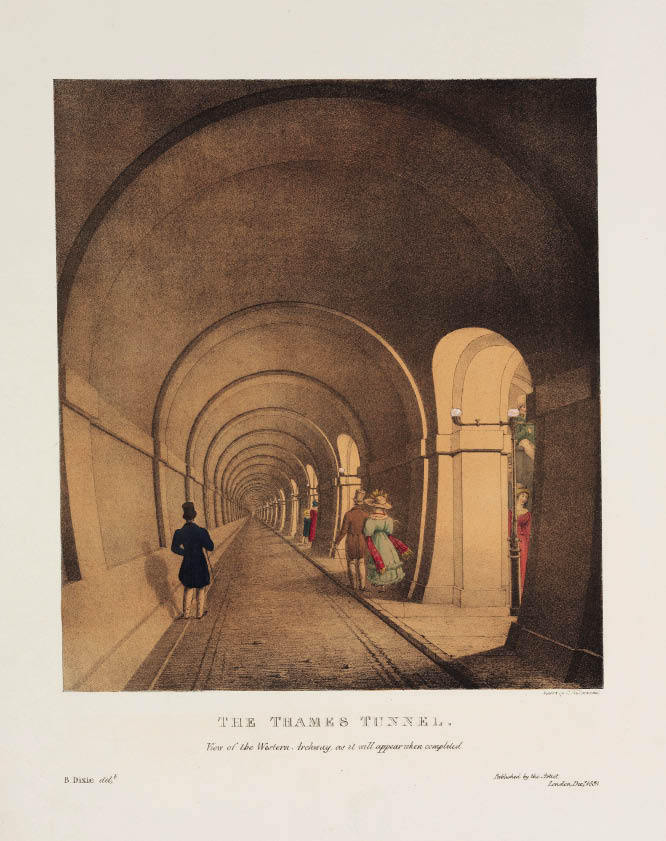For Peter Ackroyd, the subterranean world holds a potent allure. London Under, his brief account of the capital’s catacombs and other murky zones, manages to radiate a dark mystery and sulphur reek. ‘There is no darkness like the darkness under the ground’, Ackroyd announces, like a Victorian raree-show merchant. This is an entertaining if slightly daft book, that reveals what a weird world lies beneath our feet. Whether Ackroyd has actually been to all the places he describes is uncertain. Journalists have contorted themselves through narrow, stinking cave-galleries and risked leptospirosis from rat urine in their quest for London subterranea. But the stately Ackroyd?
The London sewers are vividly described here. Access today is most often through a manhole near Blackfriars Bridge. As you descend into a Victorian darkness, the sound of traffic above grows fainter and you approach the Fleet Main Line. This giant sewer runs five miles north to Hampstead. Built in 1858 — the year of the ‘great stink’ — it had served to divert drainage from the main sewers along the Thames. Until then, says Ackroyd, the river had been an open latrine, brimming with refuse and jetsam. An impressive 12,500 miles of sewer now criss-cross Greater London. To visit them requires considerable agility. ‘Sewers can never wholly be trusted’, Ackroyd cautions gruffly.
His chapter on the London Underground is fascinating, if strange. The acrid, faintly singed smell down there apparently ‘resembles the smell of hair cut with electric blades’. The fatty smell of McDonalds and KFC may be more familiar to passengers. But Ackroyd’s is a poetic pen. The cylindrical design of the Arnos Grove tube station wins his approval, as does the amazing statue of the archer atop the East Finchley tube.
Along the way, we learn that ‘pale yellow’ scorpions have been found on the Central Line, and that the Victoria Line runs so close to Buckingham Palace that members of the royal family could be ferried out of London along it in an emergency, with or without their Oyster cards. London Under is brimful of such arresting facts. Did you know that a vast electricity station lies beneath Leicester Square? It is entered by a steel trap- door on Panton Street, ‘just to the left of the half-price ticket booth’, Ackroyd specifies.
Clearly, Ackroyd finds it soothing to contemplate dark, ‘uterine’ places, and expose areas of darkness beneath London’s famous squares and green, outwardly pleasant parks. ‘Like a mother, the lower deep may have a warm embrace’, he comments, adding that it exudes the ‘warm darkness that precedes birth’. Crikey. Freud would have a field day; Peter Ackroyd illuminates the shadow world within us all.
Leo Hollis, in Stones of London, tells the story of 12 great metropolitan buildings, among them the Greenwich Naval College, the old Royal Exchange and 30, St Mary, Axe (better known as the Gherkin). Royal Greenwich is given a brusque once-over, with English heritage-style descriptions of the Observatory (‘the first purpose-built scientific research centre in England’) and the Queen’s House (‘the first example of modern architecture north of the Channel’). However, Hollis has a fine eye for architecture, and engagingly describes neo-classical marvels as well as the Labour government’s dockside folly of the Millennium Dome, now the O2 concert venue.
The book is rather bland in parts (‘In London, history hides barely below the surface’: so does it everywhere), with a scattering of non-words like ‘prestigious’, ‘major’ ‘sophisticated’ and ‘encapsulate’. Hollis is good company, though, and I especially enjoyed his chapter on Spitalfields. Orthodox Hasidim had settled in the area during the 1880s after fleeing the pogroms in anti-Semitic Russia. By the late 1960s, only a few Yiddish cockneys survived in the fur workshops north of Whitechapel Road and the stalls selling shmatter under the railway bridge on Cheshire Street. One house off Brick Lane in particular illustrates these social changes, says Hollis. Once the property of a prosperous Huguenot family, 19 Princelet Street later became a synagogue, and is now a museum of immigration.
Even as the City encroaches on it daily, Spitalfields retains a romantic aura. Rowdy drinking goes on in the Balti bars near the Brick Lane mosque, but the street continues to act as a magnet for Britain’s 300,000-strong Bengali population; shopping is done there, marriages are organised, and remittances sent home. In pages of bland if agreeable prose, Hollis brings ‘Banglatown’ to life: from Jewish cockneys to City slickers to Bangladeshi sweat-shop workers, the story of London’s most mythologised street has ‘not yet found its ending’.







Comments